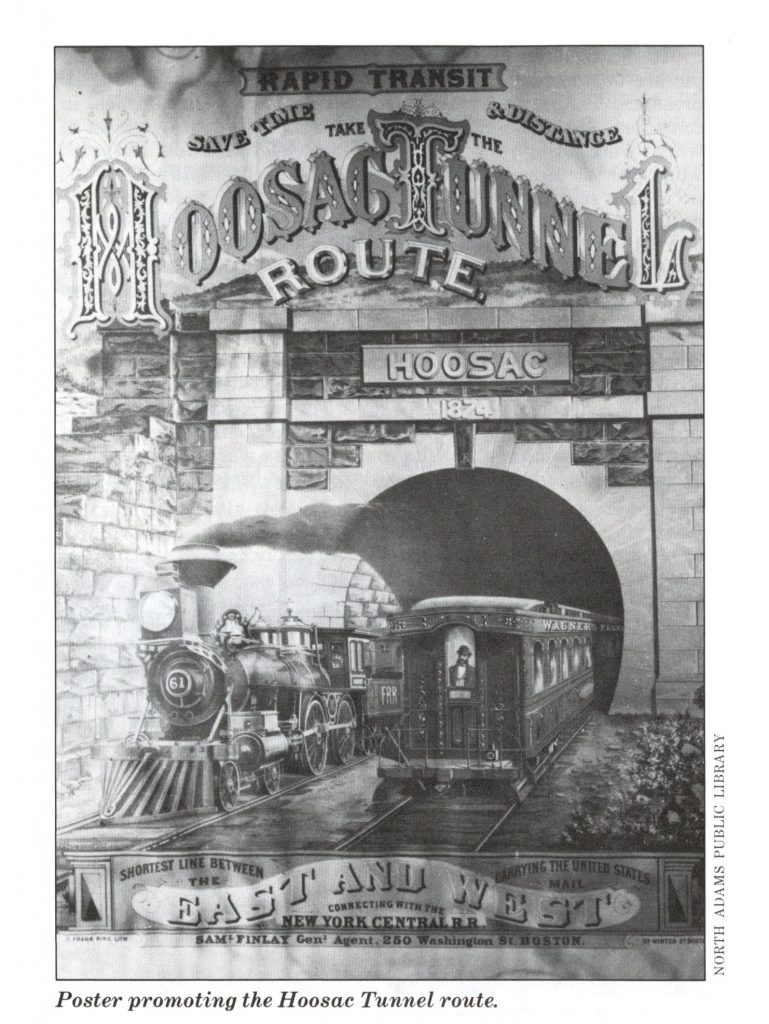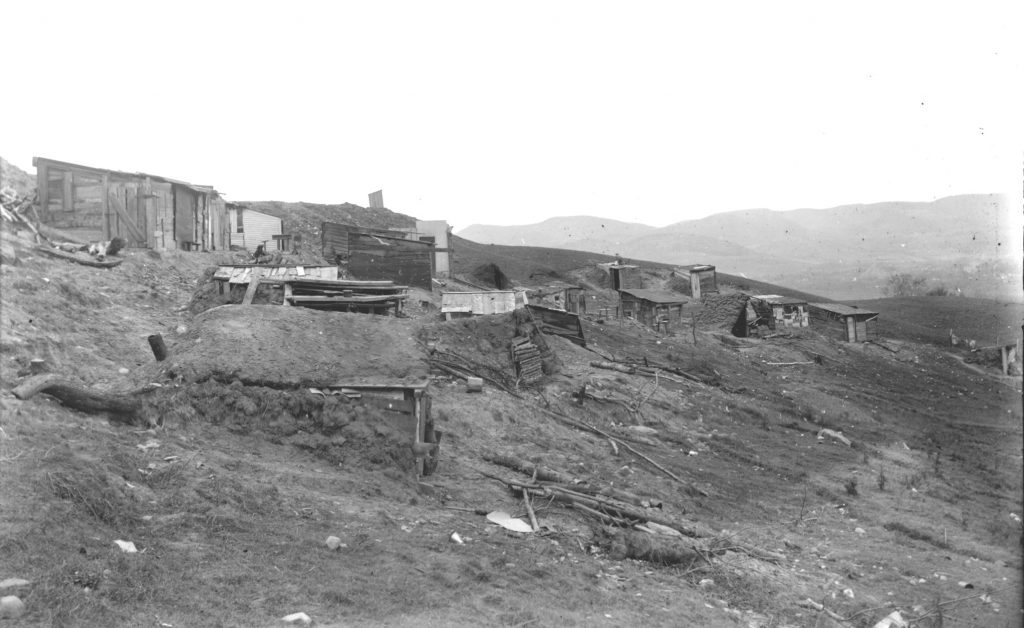
Day, Joseph C. Dew upon the mountains: a history of St. Francis of Assisi Parish, North Adams, Massachusetts … in the Berkshires. North Adams, MA: St. Francis of Assisi Parish, 1989. 18
The Hoosac Tunnel is a 4.75 mile railroad tunnel through the Hoosac Range/Green Mountains. The project was originally proposed in 1819 as a canal to connect Boston with upstate New York. The project was shelved and then reborn as a part of the Troy and Greenfield Railroad. In 1848 Alvah Crocker, a local railroad magnate, procured the charter for the Troy and Greenfield Railroad and a tunnel through the Hoosac Range. In 1854 the commonwealth of Massachusetts provided two million dollars towards the construction of the tunnel due to it’s economic importance to the region. This area of the state is filled with several interconnected mountain ranges that inhibited the flow of trade.
By 1861 the chief engineer, Herman Haupt, had excavated about 1/5 of the total distance, when Chester Chapman, the owner of a competing railroad, lobbied and managed to block state funding of the tunnel, leading to a shut down of the project.
In 1862 the Troy and Greenfield Railroad defaulted on the loan from the state and the project was seized by the Massachusetts government. The state sent an engineer overseas to study modern tunneling techniques in Europe that used nitroglycerin and compressed air. In 1863, the project was restarted by Alvah Crocker, who was now a member of Congress. In 1868 the state granted a further five million towards the project. The work was finally completed in 1875 by chief engineer Bernard Farren.
The construction of the Tunnel required millions of dollars and the use of a tunnel boring machine, which managed to dig ten feet before failing, one of the first pneumatic drills and later nitroglycerin and electric blasting caps.

The Central Shaft Accident
The Tunnel was also costly in terms of lives. Arguments have been made about the exact number, but most suggest it to be just under 200 deaths. Most died in cave ins and explosions caused by black powder and nitroglycerin. One of the worst accidents was the Central Shaft accident of 1867. Workers were digging the vertical exhaust shaft when naphtha fumes were ignited by a candle, causing a fiery explosion. Four workers near the surface escaped, but thirteen men working below were not so lucky. The fumes and flooding were such that no rescue attempts could be made.
Digging the tunnel gained a reputation for being so dangerous that few men wanted the job. Irish immigrants who could not afford to be so picky were employed. This followed the trend of the Irish immigrants taking the dangerous, hard labor jobs that domestic workers did not want, in the tunnel, mines, railroads, and factories.

Irish Shanty Town, where Hoosac Tunnel Workers Lived on the Outskirts of North Adams Photo Credit: North Adams Historical Society
Charles Cahoon, Hoosac Tunnel Accidents . Pdf. January 2, 2015.
Marc Howes, “Interesting facts from 1819 – 1999.” The History of the Hoosac Tunnel. 2000. Accessed November 23, 2017. http://www.hoosactunnel.net/history.php.
